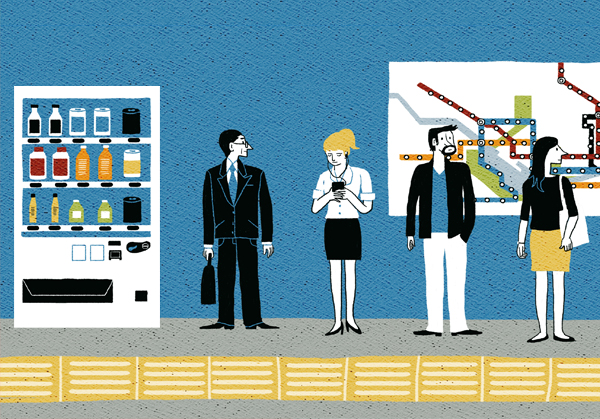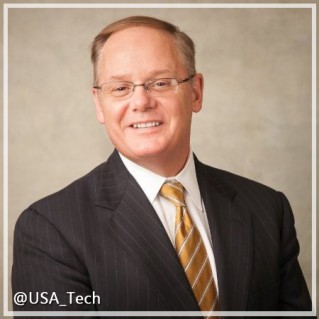Why Unattended Retail is the “Crystal Ball” of Payments’ Future

What’s in a vending machine? Beyond the shiny new products allowing brick and mortar stores to branch out with distribution, there is perhaps a certain value in unattended retail machines that are changing the landscape of payments as we speak. In a recent podcast interview with MPD CEO Karen Webster, USA Technologies CEO Stephen Herbert unveiled why the unattended retail market is growing, and just how it might be used how it might be used to predict the future of mobile payments.
Unattended retail. It’s likely something that we go about mindlessly, never thinking twice about how often we visit a conveniently placed vending or laundry machine. But when it comes to the growth of contactless and mobile payments, it’s got a pretty big footprint. Stephen Herbert, CEO of USA Technologies, spoke with MPD CEO Karen Webster to explain why exactly that is, and what obstacles must be first be overcome before unattended retail machines are an even bigger asset in the world of mobile.
KW: USA Technologies is a leader in the unattended retail space. Give us a sense of what that is and what you do to serve that segment.
SH: Well, just to give you the elevator pitch: our company serves the end-to-end electronic payment needs of what we’d characterize now as a rapidly growing unattended retail market. We added 22,000 new merchant locations last quarter, alone. I don’t know any other verticals or market spaces in electronic payments right now that are actually growing that fast.
KW: When people think of unattended retail, they may think about vending machines. But it’s become much broader than that, right?
SH: Right. We actually serve a number of different markets – vending, commercial laundry, the kiosk market – any place that a consumer might buy goods and or services in an unattended fashion. Those three, though, are lead markets. In terms of what’s at stake for the payment industry, in the verticals that we currently serve, we estimate that there are 12-15 million merchant locations moving $120 billion in transactions. We believe it’s really the last blue ocean opportunity for the payment industry. It’s a very large, lightly penetrated market that’s growing quickly.
KW: So let’s talk about what’s driving the growth. Obviously there are merchants that want new channels for distribution, but are there other factors that are making this $120 billion market a reality?
SH: Let’s take an example of an unattended market – vending. There are approximately 7 million vending machines operating in the U.S. Those locations are predominantly accepting only cash at this point. Consumers today would of course prefer to pay with credit, debit or a mobile phone. It’s really the installed base within these industries that are moving to this preferred method of payment. That’s really what’s driving the growth. There are also a number of benefits in moving to cashless. One example of this is that consumers spend an average of 30 percent more when using a form of cashless payment – that’s the number one benefit that our customers are seeing.
KW: So we’ve talked about cashless when it comes to credit and debit. Let’s talk about mobile and what’s involved in getting one of these unattended retail machines to accommodate mobile transactions.
SH: We picked up on contactless payment a long time ago, and mobile a few years ago. We all know by now that mobile payment, in some shape or form, will erratically alter the payments landscape and turn it into something that’s not necessarily just about payment. We built a network and series of devices that could take payment from a mobile device, and on top of that, we built an infrastructure that does just that, going beyond accepting payment. That’s how we wound up a few years ago in business with Isis. We have about 80,000 merchant locations that accept the Isis mobile wallet and we’re also executing a loyalty program with Isis where a consumer makes four purchases, and then the fifth is free. We have what we think is a pretty healthy running start on mobile, and we’ve learned a lot so far.
KW: I would imagine a lot of the self-service retail machines are in places where consumers visit frequently – hospitals, campuses, and more – where you can get the habitual user that becomes accustomed to buying from those. Is that what you’re seeing with mobile?
SH: Absolutely, it’s a great place to leverage loyalty because in many unattended vending locations, there’s a captive audience. In the past, when you think about unattended retail, a consumer would make a purchase and then would go away. There was no way to track and reward them for their loyalty. The other thing that is interesting is that our growing collection of merchant locations is great grounds for testing, training, and tracking applications like this. Consumers go back habitually to these locations and it’s a terrific place to find out if a new payment method has traction.
KW: So unattended retail is like the crystal ball of payments. What do you think the future holds?
SH: For one, it’s shaping the future of mobile. There are no shortages of opinion of what will make mobile work; one of the things we’ve learned through our experience in rolling out contactless and mobile payment is that until the providers of mobile wallets offer more than just payment, it might not be compelling enough to get consumers to jump in and change behavior. A good first step was loyalty, and I think Isis had that foresight with their loyalty program for which we built the rails. But mobile payments providers are going to have to continue to offer the consumer more – moving into a 360-degree relationship that will ultimately change the face of unattended retail, and point-of-sale in that market.
Stephen P. Herbert
Chairman and CEO at USA Technologies
Stephen P. Herbert was elected Chairman and Chief Executive Officer of USA Technologies in December 2011 after serving as interim Chairman and CEO since October 2011. Mr. Herbert has served on the USA Technologies Board of Directors since April 1996, when he first joined the company. As USA Technologies’ President and Chief Operating Officer from 1999-2011, Mr. Herbert oversaw all operations of the company, including network operations, sales, marketing, research and development and manufacturing. Prior to joining USA Technologies and since 1986, Mr. Herbert was employed by The Pepsi-Cola Company, the beverage division of PepsiCo, Inc., where he held several management positions in operations, sales and marketing. In his latest assignment at PepsiCo, Inc., Mr. Herbert was responsible for the development of market strategy for the vending and retail channels for Pepsi-Cola in North America. Mr. Herbert graduated with a Bachelor of Science degree from Louisiana State University.
For more on how unattended retail could significantly shape the future of contactless payments, listen to the full podcast here.

